Title : Seroprevalence of brucellosis in dairy animals and their owners in selected sites, Central Highlands of Ethiopia
Abstract:
A cross-sectional study was conducted from December, 2019 to May, 2020 with the aim to determine seroprevalence and identify the potential risk factors of brucellosis in dairy cows with recent case abortion and their owners and farm workers, and to assess knowledge, attitude and practices of the owners and farm workers toward the disease in Holeta Town, Wolmera District and Addea Berga Ethiopian Institute of Agricultural Research dairy farm Oromia regional state, Ethiopia. Purposive sampling was performed in the respective farms and kebeles to screen recent cases of abortion from dairy cows. A total of 352 blood samples from dairy cattle, 149 blood samples from animal owners and 17 from farm workers were collected for serological test. The serum samples collected were initially screened using Rose Bengal Plate test and Complement Fixation test was used as confirmatory test. The overall seroprevalence of bovine brucellosis were 1.2% (95%CI: 0.0047-0.0297) by RBPT alone and 0.6% (95%CI: 0.0016-0.0209) using combined RBPT and CFT tests. In human, the overall seroprevalence of zoonotic brucellosis was 4.2% (95%CI: 0.0204-0.0842) by RBPT and 1.2% (95%CI: 0.0032-0.0427) using combined RBPT and CFT tests. Statistical analysis of risk factors by univariable firth’s bias reduced logistic regression indicates that late stage of abortion (OR=14.74, p=0.0002), retained fetal membrane (OR=32.74, p=0.006), market based stock replacement (OR=16.55, p=0.002), natural breeding method (OR=7.58, p=0.05) and presence of parturition pen (OR=11.511, p=0.027) were found to be significantly associated with the seropositivity for Brucella infection in dairy cattle. The seropositivity of human brucellosis was significantly influenced by human housing (OR=1.8, p=0.002), contact with aborted fetus (OR=21.19, p=0.017), drinking raw milk from non-aborted (OR=24.99, p=0.012), aborted (OR=5.72, 0.019) and retained fetal membrane (OR=4.22, p=0.029) cows. A structured interview question was administered to 284 respondents. Accordingly, most respondents had no knowledge on brucellosis (93.3%) and other zoonotic diseases transmitted by handling animal delivery (88%) and consuming raw milk and other animal products (90.0%). In conclusion, the present seroprevalence study revealed that brucellosis is prevalent at lower rate among dairy cattle and in exposed individuals in the study areas. However, since there were no control strategies implemented in the area, there is a potential risk for transmission of brucellosis in dairy cattle and exposed human population of study areas. With the low prevalence of bovine brucellosis in government owned and small holder farms, implementation of test and slaughter strategy with compensation to farmers is recommended; while in case of human brucellosis, continuous social training with feedback assessments, implementing one health approach framework and since its presence is confirmed and the risk factors are identified, the medical personnel should give attention as to differential diagnosis of the disease which has been overlooked so far.
Keywords: Abortion, Bovine Brucellosis, Human Brucellosis, Risk factors, Seroprevalence.



